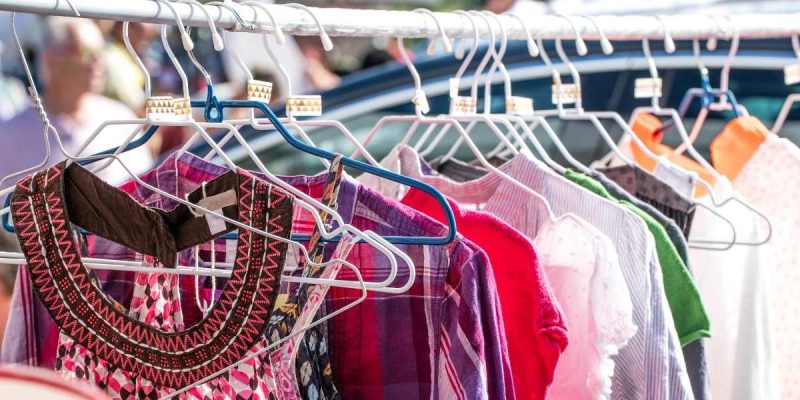Fast fashion is trendy and affordable but comes at a cost. This hidden cost is often overlooked. Fast fashion has a devastating impact on the planet and its inhabitants. From sweatshops, toxic chemicals, and exploitation of workers to pollution and toxic chemicals. This blog will explore the social and environmental consequences of fast fashion and how we can make positive changes towards a sustainable and ethical future. Let’s explore the true costs of fast fashion.
Fast fashion: its history and growth
Fast fashion is a trend that involves producing trendy and cheap clothing quickly. Fashion has been around for centuries. Fast fashion, as we know today, dates back to the 90s when retailers started to adopt the idea of low-cost production and quick turnaround. Fast fashion companies place speed and affordability above quality and sustainability. This results in a system where new clothing lines are released every few weeks.
Fast fashion brands dominate the global market, proving that this business model is extremely lucrative. In recent years its environmental and socio-economic consequences have become more apparent, causing many consumers to reconsider the way they shop and demand sustainable and ethical alternatives.
Fast fashion and the environment
Fast fashion is a major environmental problem. This industry has a massive amount of pollution from the chemicals in textile production, to the carbon dioxide emissions that are associated with transport and distribution. Fast fashion is often made from synthetic fabrics like polyester and nylon. These materials generate greenhouse gases, and require a lot of energy and water.
The fast fashion industry also contributes to waste. Each year, millions of tons end up in landfills. The waste is not only a waste of space, but it also releases harmful chemicals when it decomposes. Fast fashion can also have a major impact on ecosystems and wildlife, since chemicals used in textile production are able to leach out into waterways. Fast fashion is also a major contributor to climate change, as the industry accounts for a large portion of global greenhouse gases.
Fast fashion and its social impact
Fast fashion has a social impact that cannot be overlooked. The fast fashion industry is notorious for exploiting cheap labor, especially in developing countries with lax labour laws or no enforcement. These countries pay their workers extremely low wages, and they are forced to work under unsafe and unhealthy conditions. Fast fashion brands are linked to various labour abuses, from child labor and forced labour to trafficking.
Focusing on low prices and rapid production, we have created a race for the bottom when it comes to workers’ rights. We pay little attention to those who produce our clothing. Fast fashion is a social justice issue that touches on gender inequality, poverty and other issues. Fast fashion is disproportionately impacting women, who make up the majority in the low-wage clothing industry.
Consumers can play a key role in promoting sustainable fashion
We have the power as consumers to shape and change the future of fashion. We can influence the fashion industry by making informed, conscious choices about what we wear and which brands we support. Investing in long-lasting, quality pieces designed to last for many years instead of just one season is a great option. This will reduce waste, and encourage a minimalistic, thoughtful approach to clothing.
Supporting sustainable clothing brands with a focus on ethical labour practices is another option. Fashion brands that are sustainable often prioritize fair labor practices and use eco-friendly products like organic cotton, regenerated cotton, or recycled polyester. Clothing swaps and thrifting are great ways to reduce your fashion footprint. They give clothes a new life and keep them out of landfills.
Our t-shirts are made of organic and recycled cotton and feature a circular design to prevent them from ending up in landfills. We’re also proud to say our packaging is eco-friendly – our t-shirts are packaged in stone paper boxes and cornstarch bags.
What’s the best part? You can recycle your old t-shirt and receive a discount when you buy a new one. This way, you’ll look great while helping the environment.
Save the Children donates a food package for every tee shirt sold. You’ll not only be helping a good cause, but also making a positive contribution to the environment. Join us on our mission to make the world a better place with our recycled cotton t-shirts, and our sustainable tees for men.
Transparency in fashion is important
Transparency is crucial in the fashion industry. It allows consumers to make informed decisions about the clothing they purchase and the companies that they support. Unfortunately, fashion has a history of being opaque. Many brands hide their supply chains and labor practices. The lack of transparency in the fashion industry makes it hard for consumers to determine whether clothes they purchase are ethically produced and sustainable. In recent years there has been an increasing movement in favor of transparency.
Many brands now take steps to provide additional information about their supply chain, including the factories and materials they use. In turn, this allows consumers to hold brands accountable and make more informed decisions. Transparency can also help to drive change in the industry by promoting good practices and highlighting improvement areas. Circular fashion is a step in the right direction towards a sustainable fashion industry. It aims to reduce waste, increase garment lifespan through recycling and upcycling.
The role and policies of government in the regulation of fashion industry
The government and policy makers also play a key role in regulating and promoting ethical and sustainable practices. France was the first country to pass a regulation regulating the fashion industry. The law prohibits the destruction of unsold products, and requires companies to reuse, recycle, or donate them. Some countries have already implemented regulations regarding worker rights and environmental protections within the textile and clothing industries.
Many experts believe that the government should do more to encourage sustainable and ethical fashion practices and hold fashion brands responsible for their impact on society and the environment. Taxes or tariffs may be imposed on environmentally harmful products or subsidies given to sustainable production methods.
Fashion industry future and potential for change
Fashion is at a crossroads. It faces increasing pressure to consider its impact on society and the environment. Fast fashion has been dominant in the industry for decades. However, signs are emerging that it is changing. Consumers are increasingly aware of the impact their purchases have on the environment and demand more ethical and sustainable fashion options. Many brands are responding by investing in ethical labor practices, sustainable production methods and transparency.
Fashion must evolve to ensure a sustainable and fair future. Collaboration across the industry is required, from consumers to policymakers to brands, and will also require continued innovation. We are ultimately responsible for the future of fashion. By working together we can create an industry that is more sustainable and fair. Participating in agoodloop will help you contribute to a circular program that reduces waste and promotes sustainability. Do not delay – start today and make a difference!













Comments